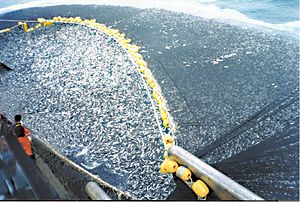Native Advertising: Can It Be More Than Clickbait?
 As our donor pools shrink from overfishing, it’s important for us to bring new people to giving and philanthropy. To date our business models are built on a cornerstone of getting people who give to care about our organization. But, to insure a brighter future we need to look beyond this and motivate folks who care about our subject matter to give– perhaps for the first time.
As our donor pools shrink from overfishing, it’s important for us to bring new people to giving and philanthropy. To date our business models are built on a cornerstone of getting people who give to care about our organization. But, to insure a brighter future we need to look beyond this and motivate folks who care about our subject matter to give– perhaps for the first time.
That’s why I’m excited about any new experiment aimed at bringing people to an organization and a mission. That, plus the Law of Shitty Clickthroughs I talk about here means that each channel (Face-2-Face, Facebook, you name it) goes from the flavor-of-the-week to just-another-channel over time. There’s an advantage, then, in seeing the new before everyone else.
This new experiment was done on native advertising. For those not familiar with the term, think of the small ads at the bottom or side of a website with jazzed-up titles. For example, I went to a news story at random; these were the native advertising headlines:
- Glasses-Wearers Are Going Crazy Over This Website
- Forget Paying For Antivirus (Do This Instead!)
- If You Can Qualify for Any Credit Card, These Are the Top 6
- These Are The Best Flats You Can Buy – Here’s Why
- [Pics] Man Turned Boeing 727 Into His Home – Wait Till You See The Pics
A cancer research organization wanted to see how these ads would work for them. The full story is here. The short version is they tested two brand ads aimed at reinforcing awareness of their own organization’s strengths, and one ad aimed at increasing the size of their audience (an article for loved ones to offer support during challenging times, asking visitors to download a PDF by giving their email address).
The theory behind the test is that this type of lead generation advertising can create an interested constituent for the organization while providing value for the recipient. After all, if it’s quality content, it’s worth giving your email address to get it.
(Don’t believe me? Download our guide to getting people to opt in to communications here!)
Results. With a $2,000 test budget, the campaign reached over three million people. This is in theory, of course; banner blindness means that many of these users looked over the ad in the same way the circulation of a magazine doesn’t equate to the number of people who saw the ad on the bottom of page 53.
At $.83 Cost-Per-Click (CPC) the campaign got about 2400 clicks. The participants said engagement was low on the site. This is in large part due to context. People judge the quality of a claim by the company it keeps. When you are on sites with less reputable content, your content is considered less reputable. And when you are aiming to keep your cost-per-click low, those are the sites you’ll be placed on.
Consider the campaign of Sleeping Giants against Breitbart. Big brands were natively and naively advertising with no control over where their ads were showing. Thus, advertisers like AT&T, Johnson & Johnson, Coke, Pepsi, etc. were shocked when Sleeping Giants showed them their ads were showing up next to articles like “Birth Control Makes Women Unattractive and Crazy” and “Gay Rights Have Made Us Dumber, It’s Time to Get Back in the Closet.”
(Quick note: if you are considering native advertising, be sure to have a list of the sites and types of sites on which you will not advertise.)
Additionally, the audience is highly variable. Some native advertising sellers say they reach 90% of US Web users. Picture targeting your advertising (if targeting can be used in this content) about cancer care to ten people picked at random from the web. Then discard the worst one. You still have a very high haystack-to-needle ratio in trying to find an audience that will engage with your advertising. As the testers put it: “In our case, ads were likely shown to audiences well beyond the users who were already looking for helpful cancer-related content that we hoped to pay for.”
I know this doesn’t sound like a big vote in favor of native ads. It’s not. Given these data, I can’t think this a suitable strategy for nonprofits looking (I hope) to bring in a more valuable constituent and go deep, not wide, with outreach.
It is a big vote, however, in favor of trying new things. This may not be the acquisition strategy of your dreams as it currently exists. But that’s like looking at a baby and saying “Can’t feed itself. Can’t walk. Aromas horrible.” and giving up on it.
There will be a time, perhaps not soon, when those who produce quality content will demand both advertising of the same quality and the prices to match. The nonprofit in this case would likely pay 10x more per click if they were the best highly convertible constituent – that is, they could match the web surfers to a valuable one on their file.
Take this proposal from Matt Ipcar for native advocacy, where a publication and an organization work in harmony on sponsored content. That op-ed against caging children (because such op-eds need to be written today) could have advertising from RAICES or ACLU next to it instead of sunglasses or credit card offers.
So, native ads may not be the panacea, or really any sort of acea, to bringing in new constituents. But let’s keep pushing that envelope. Somewhere in here is a future.
Nick


